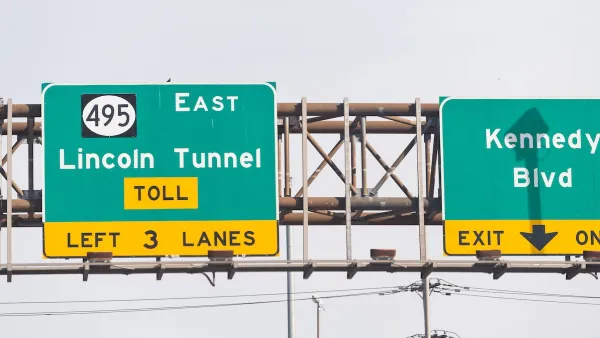A combination of road pricing and adjustments to transit service could let the CTA lower fares to ‘next to nothing.’

A new analysis of Chicago’s transit system “finds that blending charges for drivers with adjustments to transit fares and schedules offers a promising path” for shifting away from private vehicle use and funding effective public transit.
“The researchers considered three transportation policies: adjusting bus and train fares, changing bus and train frequencies, and introducing a fee on cars driving into the city.” They then modeled various scenarios, from one that would give the CTA unlimited funding to ‘more realistic’ options that would adjust road pricing or transit service.
The best option, according to the team, would be a combination of road pricing and changes to transit frequencies and fares. “If authorities pursue both policies simultaneously, the researchers find, the revenue collected from charging commuters 30 cents a kilometer could subsidize cheaper, more convenient public transit. The CTA could slash fares to next to nothing: 16 cents for a bus fare compared with $2.25 today and 26 cents for the train, down from $2.50. Excess revenue from road fees (any collected beyond the amount required to finance the CTA at this level) could go back to residents in the form of rebates, lessening the budgetary strain on middle-income commuters.”
FULL STORY: Charge Drivers to Improve Public Transit

National Parks Layoffs Will Cause Communities to Lose Billions
Thousands of essential park workers were laid off this week, just before the busy spring break season.

Retro-silient?: America’s First “Eco-burb,” The Woodlands Turns 50
A master-planned community north of Houston offers lessons on green infrastructure and resilient design, but falls short of its founder’s lofty affordability and walkability goals.

Delivering for America Plan Will Downgrade Mail Service in at Least 49.5 Percent of Zip Codes
Republican and Democrat lawmakers criticize the plan for its disproportionate negative impact on rural communities.

Test News Post 1
This is a summary

Test News Headline 46
Test for the image on the front page.

Balancing Bombs and Butterflies: How the National Guard Protects a Rare Species
The National Guard at Fort Indiantown Gap uses GIS technology and land management strategies to balance military training with conservation efforts, ensuring the survival of the rare eastern regal fritillary butterfly.
Urban Design for Planners 1: Software Tools
This six-course series explores essential urban design concepts using open source software and equips planners with the tools they need to participate fully in the urban design process.
Planning for Universal Design
Learn the tools for implementing Universal Design in planning regulations.
EMC Planning Group, Inc.
Planetizen
Planetizen
Mpact (formerly Rail~Volution)
Great Falls Development Authority, Inc.
HUDs Office of Policy Development and Research
NYU Wagner Graduate School of Public Service





























